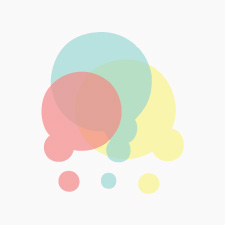Designing open assignments
An open assignment refers to any student coursework done on a public-facing platform like the OpenLab. These assignments are designed according to their purpose, content, and audience. Designing an open assignment requires answering some basic pedagogical questions.
- What is the goal of the assignment? Is it to have students talk to each other? To have students show what they have learned?
- Who are students creating for? Who is the audience for the work?
- What knowledge/ learning process is being captured in student work?
Assignments can then be high-stakes or low-stakes; writing intensive or media intensive; group or individual.
Some common types of open assignment on the OpenLab include:
- Blogging (periodic free writing or responding to prompts with individual posts). See how City Tech instructor Jackie Blain has students respond to prompts on the readings in the class blog.
- Commenting (either on an instructor’s post or on one another’s post, as City Tech instructor Jill Belli has students do in this example, where she drafts an initial post that includes discussion prompts that students respond to through comments.)
- Annotating a text (using the WordPress Hypothes.is plugin/ Chrome extension Hypothes.is). See how City Tech instructor Sandra Cheng has students collectively annotate an essay by Susan Sontag.
Open assignments offer several important advantages over closed assignments. First, open assignments give students a wider audience for their work than just the professor. They allow students to reach their peers in the class, as well as readers within AND without the college community. While this can be intimidating for students at first, open assignments can also increase a student’s confidence, allowing them to see and draw inspiration from what their classmates have done.
Note that, while we encourage openness on the OpenLab, you can choose from a wide range of privacy options: coursework can be open only to other members of the class, to all members of the OpenLab, or to everyone in the world.
Some instructors have designed open assignments that specifically ask students to collaborate and build from each other’s work. Jonas Reitz does this with a “logic puzzle” assignment in which students are to write a common phrase–perhaps an idiom or song lyric– in logical (mathematical) notation. Students are asked to reply to each other and solve the logic puzzle– that is, translate the underlying phrase back into English.
In a similar vein, open assignments can make expectations for coursework reliably transparent. Not only can students “peek” at one another’s work, they can also read the public feedback instructors leave for other students.
Open assignments on the OpenLab are well suited for multimedia work– that is, work that includes not just text but images, videos, maps, audio recordings, etc. For example, students in Karen Goodlad’s Hospitality Management course published photograph-rich blog posts highlighting what could be seen in “36 Hours on the Brooklyn Waterfront.” Students in Jason Montgomery’s course on “Learning Places” created podcasts about research they had conducted about neighborhood change in Brooklyn. Aside from being incredibly creative, such open assignments are a great way to play to different student skill sets and increase student digital proficiency.
Finally, open assignments can foster peer-to-peer dialogue. They allow students to challenge and support each other, as well as to socialize around shared interests. In this vein, some instructors have found creative ways to root their open assignments in a (more or less) shared popular culture. Jackie Blain does this in her Writing in the Workplace course, where students published “Virtual Workplace Ethnographies” of workplaces featured on popular TV Shows. This kind of grounding in popular culture can be a great way of having students relate to one another’s work and learn about one another’s interests.
We hope the examples provided here give you a useful starting point and a sense of all that is possible on open platforms for teaching and learning. That said, if you’re hungry for more examples (and there are many, many more to choose from!), you can consult the Open Assignment repository found in the docs of the Open Pedagogy profile page.
Finally, the OpenLab team is frequently asked whether open assignments inadvertently invite plagiarism by making previous student work easier to copy. We hope that the examples highlighted here show that, through novel prompts and methods, open assignments can actually promote out-of-the-box, plagiarism-resistant work!
Further Reading:
- Living Lab Learning Library: Virtual Resource Exchange of Innovative Teaching Practices
- Open Pedagogy on the OpenLab: OpenLab Assignments
- Open Pedagogy on the OpenLab: Resources for Assignments
- Open Pedagogy on the OpenLab: A List of External Readings on Open Pedagogy
- Hypothes.is for Educators
- Open Pedagogy examples from the Open Pedagogy Notebook
- DS106 Assignment Bank









